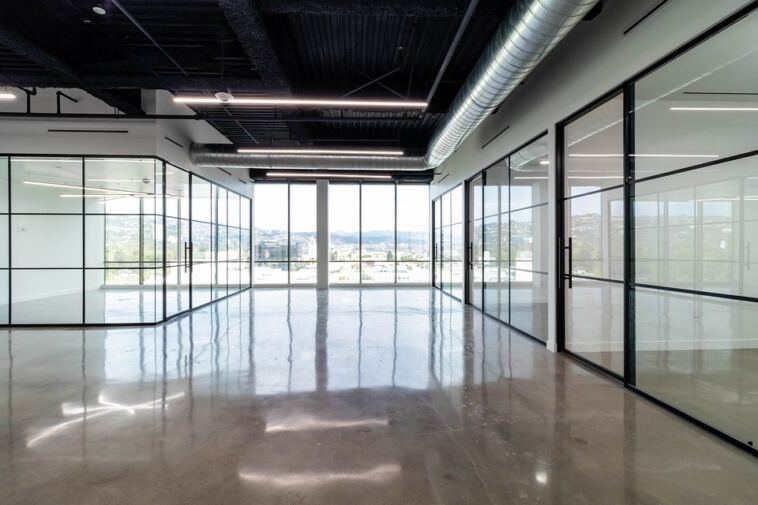- Like
- SHARE
- Digg
- Del
- Tumblr
- VKontakte
- Flattr
- Buffer
- Love This
- Save
- Odnoklassniki
- Meneame
- Blogger
- Amazon
- Yahoo Mail
- Gmail
- AOL
- Newsvine
- HackerNews
- Evernote
- MySpace
- Mail.ru
- Viadeo
- Line
- Comments
- Yummly
- SMS
- Viber
- Telegram
- JOIN
- Skype
- Facebook Messenger
- Kakao
- LiveJournal
- Yammer
- Edgar
- Fintel
- Mix
- Instapaper
- Copy Link
If you run a business of any size, you will need a cooling solution to keep the temperatures down during the summer months. Even if the business in question is located in Alaska, North Dakota, or any of the other cold states, hot spots like restaurant kitchens and manufacturing plants will still need to be cooled down just the same. In a state like Texas or Nevada, for example, you will have to plan cooling solutions even if your business only involves sitting in front of a computer all day in your home office.
Whatever your needs may be, rest assured that there are ways to bring down the temperature in your place of business with the help of technology without bumping up the electricity bills any further. After all, boosting the cooling capacity at your place of business can skyrocket the annual energy consumption to all new heights if you are not careful. If anything, the tech tips next will help lower your business’s total energy consumption.
Switch to High-Volume Low Speed Fans
If you are still using high-speed fans in your warehouse, factory, office, or any other commercial/industrial space, switch to high-volume low speed (HVLS) fans if you can. Whether or not you can switch to HVLS fans will depend on how much space there is at your place of business, how high the ceilings are from the floor, the ceiling’s structure, and a few other variable semantics. Discuss with the seller and the electrician who will be installing the fans, before buying anything.
Earlier, the large fans were only restricted to huge industrial facilities such as factories and warehouses. As they come in a wide range of size options now, HVLS fans can be successfully installed in a much wider range of buildings these days. Anything from big office buildings and the average packing facility to even medium-sized barns (enclosed only) can now be fitted with HVLS fans for better cooling, air circulation, ventilation, moisture prevention, and energy savings.
Note that if HVLS fans are an option at your place of business, the energy savings are going to be significant for you. However, it’s not just for saving energy that people use them. Despite the low speed, high-volume low speed fans are considerably better at cooling and dehumidifying large spaces than any high-speed fan can be. There’s a reason why these fans are used primarily to keep things cool in giant industrial facilities.
Use High-Speed Directional Fans Instead of High-Speed Ceiling Fans
Not every place can be fitted with giant HVLS fans of course, but that is exactly why we have smaller, but heavy-duty directional fans. If HVLS fans are not an option, use directional fans instead to have better control over your cooling. You can use a directional fan to gain better control of the air jets, even if you do already have high volume low speed fans overhead.
Additionally, a directional fan will provide better, and more continuous spot cooling even in semi-enclosed spaces such as work sheds, mechanic shops, loading facilities, etc. If it’s an enclosed space, you can shrink your cooling bills even further by coordinating the speed of your directional fan with that of your HVAC fan. They consume a lot less electricity than high-speed industrial ceiling fans but provide significantly better spot cooling.
Heating and cooling systems always consume more energy when you speed up their internal fan speed. A wall mounted fan will let you keep the air conditioner’s internal fan speed down to a minimum. A directional wall mounted shop fan can actually circulate and/or focus cool air at a much higher speed while consuming less energy than a high-speed ceiling fan. Unlike high-speed ceiling fans, which are known for interfering with the HVAC’s cooling efficiency, a mounted directional fan will only direct cool air where you want it to.
Check the Insulation
There is a lot of difference between standard commercial insulation and industrial insulation, but the bottom-line is that it must be up to date and in good condition. Even the best indoor cooling systems will not work if the insulation is not working as well as it should or could. Make sure that everything from the roof and the walls to the window seals are in place by arranging for monthly insulation checks.
For example, all commercial and industrial buildings should have one or more layers of thermally insulated membranes on the roof and the external walls to keep the heat outside from getting in. Polyisocyanurate, extruded/expanded polystyrene, Mineral wool, and fiberglass are all good options for commercial heatproofing.
Use Laptops Whenever Possible
In comparison to laptops, desktops generate considerably more heat, consume significantly more energy, but provide substantially more computing power. Consequently, desktops raise the temperature around them in any enclosed space, but they also bring more power to the table. Therefore, it’s always going to be hotter inside with desktops, whether you are your only employee in a home office setup, or you have a big office with multiple busy employees.
If you do have your own business with a lot of busy employees, the heat generation and energy consumption is going to be a lot higher for obvious reasons. Since desktops don’t come with their own displays, you are also paying for the monitors that your desktops are hooked up to. Other than the extra heat and more energy consumption, desktops also force indoor cooling systems to work harder, as they have to compensate for the extra heat generated continuously inside the building.
Laptops can also be power hungry, but as compared to desktops, their power requirements are noticeably lower. It’s true that you may not be able to replace all your desktops, especially if you do business in a sector where the computing power of a full desktop is very much a business requirement. Nevertheless, switch to laptops whenever that extra power is not required, and you should see a noticeable reduction in the company’s monthly electricity bills.


